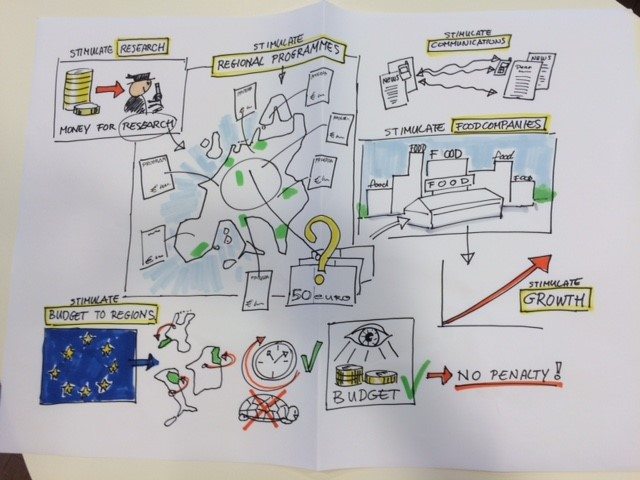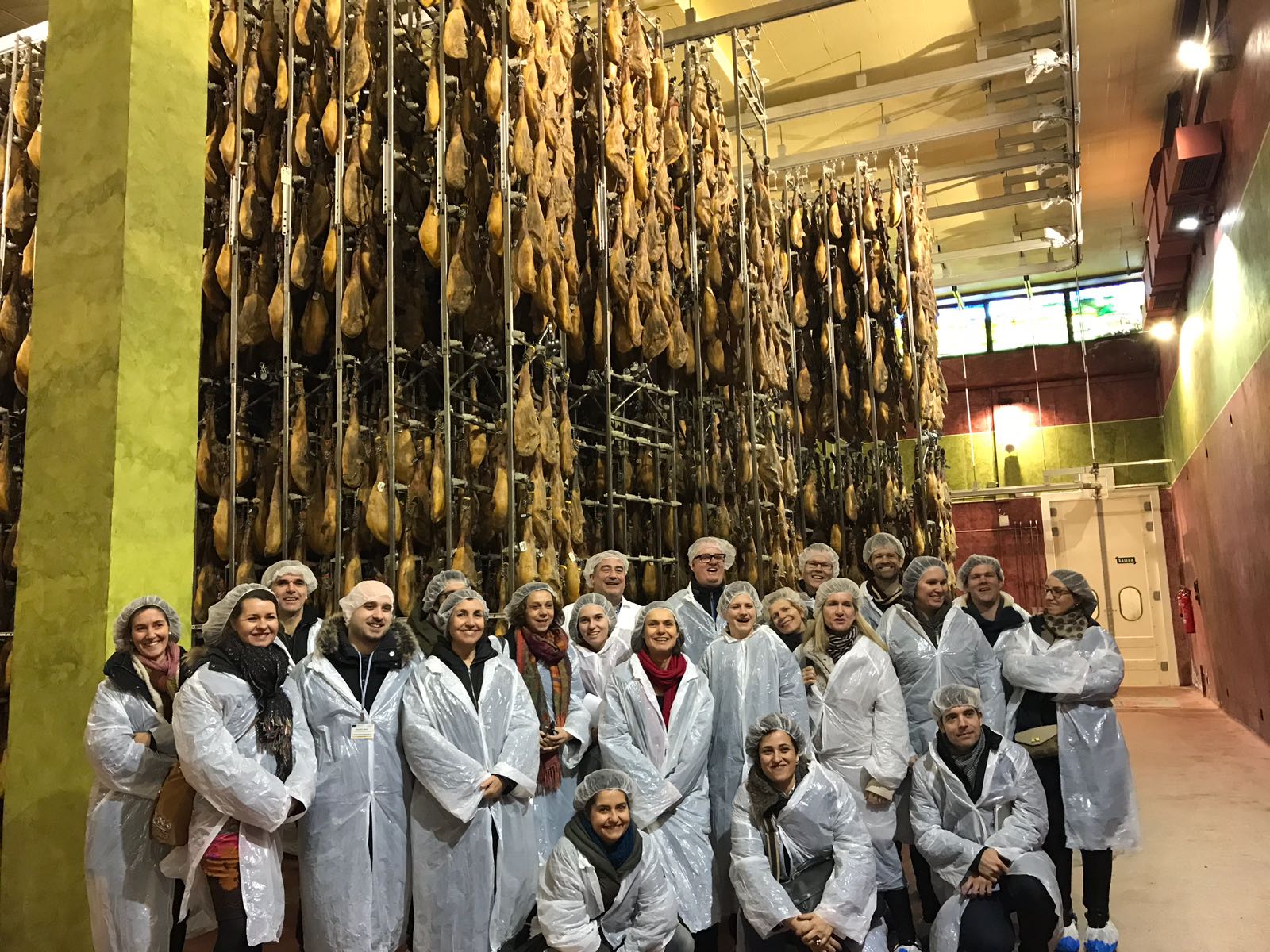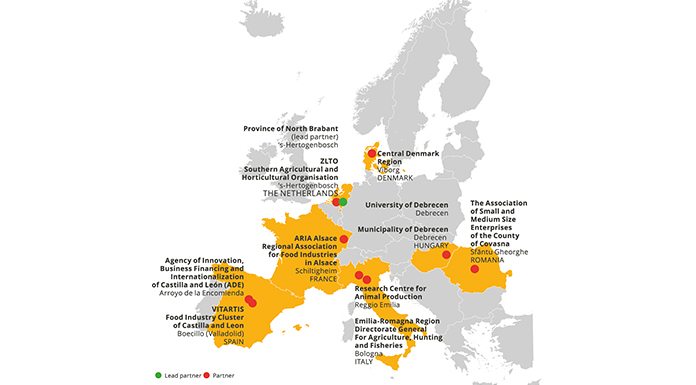The STRING project details how the performance of regional development instruments and programmes depends on building strong agrifood innovation systems for creating and co-operation
pp
The brand new pan-European STRING project improves the performance of regional development instruments and programmes in building strong agrifood innovation clusters as test beds of co-creation and co-operation in the agrifood production sector.
The provision of smart, healthy and sustainable food is a top priority in Europe. The liveliness and dynamism of some European regions depends on the level of activity in the agrifood sector. STRING boosts competitiveness of agrifood companies through innovation and international development, stressing the importance of (new) clusters and co-operations.
The agriculture and food industry are challenging drivers for regional innovation and growth. STRING unifies European regions sharing the ambition to improve the international competitive capacity of their agrifood cluster because those clusters have enormous economic and societal impacts, both today and tomorrow!
All STRING project regions are renowned for their food production traditions and their innovation potential. They are all engaged in innovation and production through different roles. The overall objective of these partners is to improve the performance and implementation efficiency of development policies in programmes related to food research, development and innovation, and clustered collaboration to promote innovation value chains for the sector.
Deepening cluster integration
 By further cluster integration and creating more added value – contributing to smart growth – each region will reach this ambition. The STRING project promotes intensive interregional learning, knowledge exchange and ever-lasting inter-cluster co-operation. The European Regional Development Fund (ERDF) has financed policy instruments related to agrifood innovation and to the vertical triple helix clusterisation – both supported by enhanced SME participation. Intra- and inter-cluster co-operation is deepened, serving the proper operation of food innovation value chains in the seven partner regions and the EU more widely.
By further cluster integration and creating more added value – contributing to smart growth – each region will reach this ambition. The STRING project promotes intensive interregional learning, knowledge exchange and ever-lasting inter-cluster co-operation. The European Regional Development Fund (ERDF) has financed policy instruments related to agrifood innovation and to the vertical triple helix clusterisation – both supported by enhanced SME participation. Intra- and inter-cluster co-operation is deepened, serving the proper operation of food innovation value chains in the seven partner regions and the EU more widely.
Strategies for creating added value are also adopted and successfully applied via new food innovation projects born at the interface of collaboration amongst economic sectors, such as healthcare, high-tech systems and Big Data.
Engines for change
High education levels and significant investments in R&D are important to create high-level human capital in both the agriculture and food industry, facilitating boosts to innovation and competitiveness within international markets. High-labour productivity can only be reached when relevant resources are allocated to the creation of competent farmers and food industry managers.
Practical experience is certainly not sufficient to sustain innovative development pathways and create the ability to operate on extremely difficult export markets singularly. North Brabant, the Netherlands, and Central Denmark are outstanding examples of highly competitive regions where a high-level education and innovation ecosystem explains their production and export performance. Alsace, France, and Emilia-Romagna, Italy, are following these two leading regions in a secondary position, which is largely attributed to lower levels of education and minor investments in R&D. Castilla y Leòn, Spain, has moderate performances in productivity and exploitation of export potentials. Among the two Eastern European regions, the Northern Plain in Hungary shows decisively lower levels of economic development, unlike discrete levels of tertiary education. The Central Region of Romania lags behind because of low levels of investments in R&D and low levels of agricultural training for farmers and tertiary education.
Fact check: Agriculture and food in the centre
In the European context, the food sector in general and food clusters (as test beds for innovation), in particular, potentially prosper in those regions where the sector is positioned as central to regional development strategies:
A number of accelerators:
- GDP per person employed varies from €19,000 (North Plain Hungary) to €74,000 (North Brabant) in agriculture;
- GDP per person employed varies from €17,750 (North Plain Hungary) to €130,500 (Central Denmark region) in the food industry;
- Average R&D as a percentage GDP: 1.6% R&D investments are around 2.8% in the Central Denmark region, and investments of at least 0.2% in Covasna County, Romania;
- Average export of agrifood poduct as a percentage of total export: 28.4%. Varying from a range of 8.5% (North Plain Hungary) to 50% (North Brabant); and
- Average percentage of agrivulture in total employment: 3.36%. With Castilla y Leòn at the highest level (7.2%) and Aria Alsace at the lowest (0.9%).
The fellowship of STRING
 The development of the STRING project began with the province of North Brabant (NL) and the Emilia Romagna region (IT) in early 2015. The starting point was innovation chains in regional food clusters. The project partnership involves second regions of Europa and, altogether, eleven partners. For all the regions agrifood was an important part of their Smart Specialisation Strategy.
The development of the STRING project began with the province of North Brabant (NL) and the Emilia Romagna region (IT) in early 2015. The starting point was innovation chains in regional food clusters. The project partnership involves second regions of Europa and, altogether, eleven partners. For all the regions agrifood was an important part of their Smart Specialisation Strategy.
In June 2017, the STRING project launched in in Bologna, Italy. In the first phase, “Regional Engines for Change” was developed. Based on statistics, regional policies, best practices and learning needs, a framework for Phase 2 has been built – the Knowledge Exchange. Using information on good practices and learning needs, regions were matched together with regional stakeholders, which are taking part in site visits and learning experiences.
We are only half way, but we have already had some interesting learning experiences. After three site visits in the Debrecen region, Hungary, it turns out that a lot of food companies have better understandings of the demands for current markets and are better equipped to respond to changing demands, in comparison to some major food companies from the North Brabant region.
This learning experience, and a lot of others, will be integrated into regional policy advice for the next European programme period from 2018 – 2028. If you are interested, please follow us on social media or our website and get in touch!
Inspirational testbeds across Europe
- Innovation Camps (Central Denmark region): Co-operation between SME’s, business academies and university colleges. Innovation Camps are a way of establishing added value for education institutions, students and SMEs, with innovation ideas and ambitions. Creating a public-private triple helix partnership approach, Innovation Camps build on one coherent innovation ecosystem in the Central Denmark region and Denmark.
- Enjoy the taste of Alsace (Aria Alsace): Savourez l’Alcase® is a territorial brand of more than 2,500 products from 50 different food companies, in accordance with specifications. The aim of creating a collective brand is to improve business for food industries. As a matter of fact, promoting a collective brand is more efficient and powerful than promoting several different brands, even if they are strong in Alsace. This brand is available in every food business, with the head office and production site located in Alsace.
- The Pharmaplis Innovative Food Cluster (North Plain Hungary): This food cluster operates the so-called ‘I-Bolt’ store. The aim of ‘I-Bolt’ is to develop new products, such as bread, certain cheeses, pizza with sorghum, traditional ice creams, purple corn, frozen wine, LactoMicroSel® and new forms of selenium, amongst others. These are developed in co-operation with the university and SMEs. In order to sell these new products, they have created a shop and participate in exhibitions in order to meet consumers.
- Regional Network of Technopoles (Emilia Romagna region): a network of infrastructures located in ten sites throughout the regional territory, co-ordinated by the Emilia Romagna Regional Government in co-operation with universities, research centres and local authorities.
- The Castilla y Leòn Entrepreneurship and Innovation Network is a new way to stimulate and promote a more competivitve regional-economic model through smart specialisation, relating all key actors of innovation: administrations, universities and business-technology centres.
- Food Tech Brainport (North Brabant) helps SMEs and larger SMEs to turn technology into money: technology used in the processing of plant waste, the extension of shelf life, and the separation of raw materials and/or waste streams. By doing so, the best in food and technology – from the high-tech and chemical industries, for instance – are brought together.
- AgroFood Regional Cluster (Central Region Romania) is going to produce Europe’s first gluten-free fibres, enriched with natural mineral water and developed by co-operation.
Also improving the capacity of your agrifood cluster? Join in. STRING Interreg Europe.







